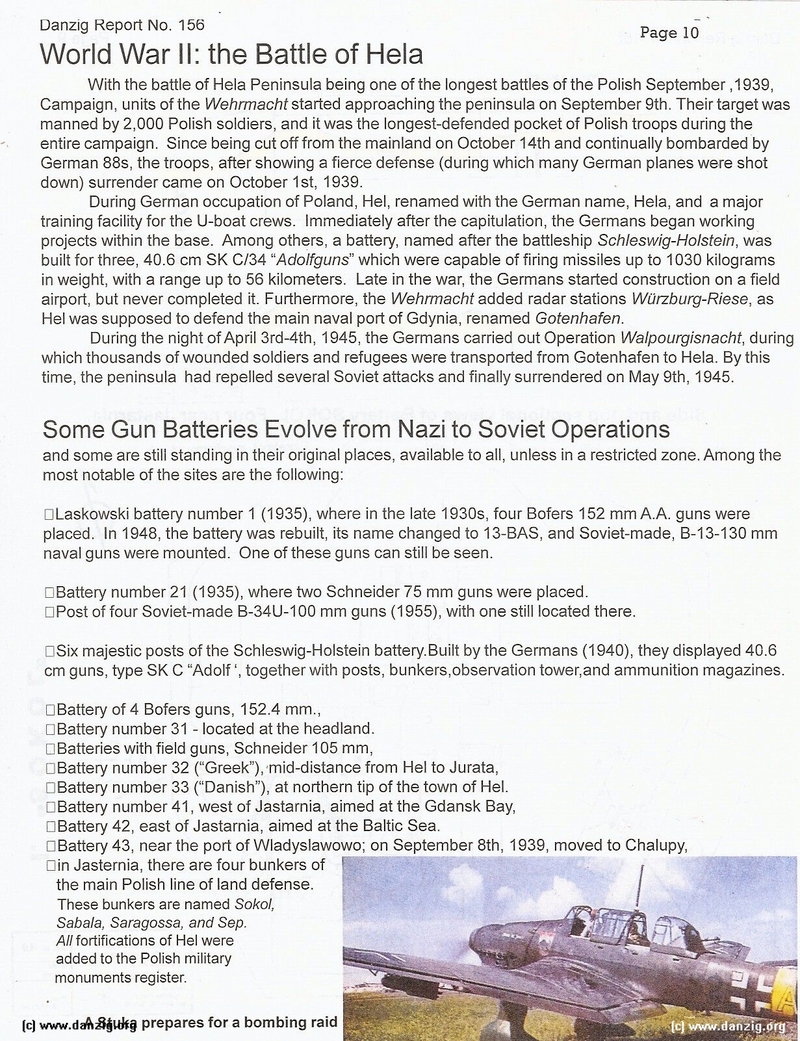
World War II : the Battle of Hela :
With the battle of Hela Peninsula being one of the longest battles of the Polish September, 1939, Campaign, units of the Wehrmacht started approaching the peninsula on September 9th. Their target was manned by 2.000 Polish soldiers, and it was the longest-defended pocket of Polish troops during the entire campaign. Since being cut off from the mainland on October 14th and continually bombarded by German 88s, the troops, after showing a fierce defence (during wich many German planes were shot down) surrender came on October 1st, 1939.
During German occupation of Poland, Hel, renamed with the German name, Hela, and a major training facility for the U-boat crews. Immediately after the capitulation, the Germans begin working project within the base. Among others, a battery, named after the battleship Schleswig-Holstein, was built for three, 40.6 cm SK C/34 "Adolfguns" wich were capable of firing missiles up to 1030 kilograms in weight, with a range up to 56 kilometers. Late in the war, the Germans started construction on a field airport, but never completed it. Furthermore, the Wehrmacht added radar stations Würzburg-Riese, as Hel was supposed to defend the main naval port of Gdynia, renamed Gotenhafen.
During the night of April 3rd-4th, 1945, the Germans carried out Operation Walpourgisnacht, during wich thousands of wounded soldiers and refugees were transported from Gotenhafen to Hela. By this time, the peninsula had repelled several Soviet attacks and finally surrendered on May 9th, 1945.
Some Gun Betteries Evolve from Nazi to Soviet Operations
Some Gun Batteries Evolve from Nazi to Soviet Operations and are still standing in their original places, available to all, unless in a restricted zone. Among the most notable of the site are the following :
- Laskowski bettery number 1 (1935), where in the late 1930s, four Bofers 152 mm A.A. guns were placed. In 1948, the battery was rebuilt, its name changed to 13- BAS, and Soviet-made B- 13- 130 mm naval guns were mounted. One of these guns can still be seen.
- Battery number 21 (1935), where two Schneider 75 mm guns were placed.
- Post of four Soviet-madeB- 34U- 100 mm guns (1955), with one still locatedc there.
- Six majestic posts of the Schleswig-Holstein battery. Built by the Germans (1940), they displayed 40.6 cm guns, type SK C "Adolf", together with posts, bunkers, observation tower, and ammunition magazines.
- Battery of 4 Bofers, 152.4 mm.
- Battery number 31 - located at the headland.
- Battery with field guns, Schneider 105 mm.
- Battery number 32 ("Greek"), mid-distance from Hel to Jurata.
- Battery number 33 ("Danish"), at northern tip of the town of Hel.
- Battery number 41, west Jastarnia, aimed at the Gdansk Bay.
- Battery number 42, east of Jastarnia, aimed at the Baltic Sea.
- Battery number 43, near the port of Wladislawowo; on September 8th, 19639, moved to Chalupy.
- in Jastarnia, there are four bunkers of the main Polish line of land defense.
These bunkers are named Sokol, Sabala, Saragossa, and Sep.
All fortifications of Hel were added to the Polish military monuments register.
Danzig Study Group U.S.A.
Danzig Report Nr. 156 - April - May - June - 2012, Page 10.
Hits: 4357
Added: 03/06/2012
Copyright: 2025 Danzig.org

